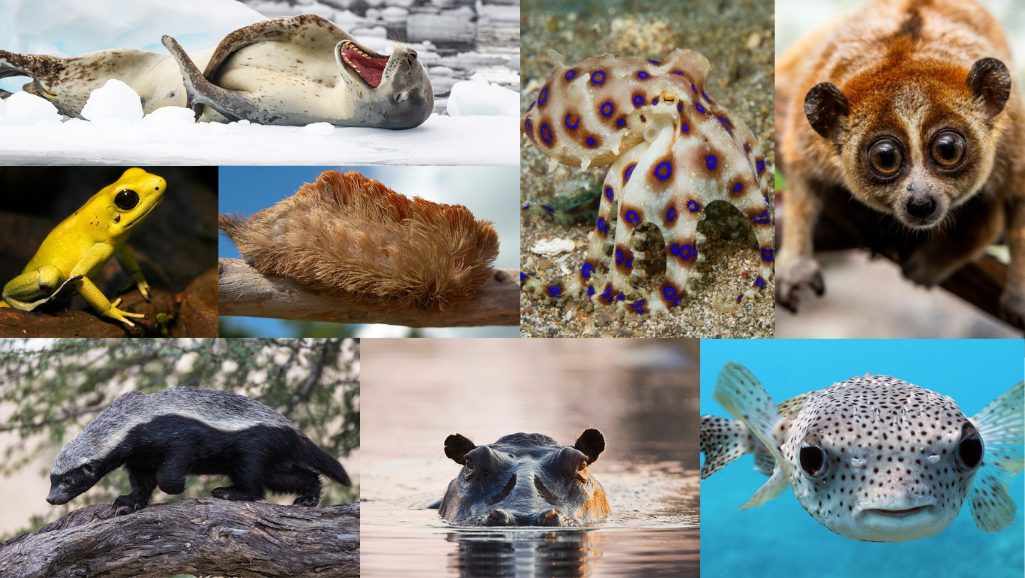

They may be fluffy, tiny, or just-plain adorable looking, but these super cute animals are not for cuddling. They’re actually really dangerous. Thankfully, there’s no harm in reading about them or enjoying their cuteness from afar.
Did you know these cute creatures could be so dangerous?
Pygmy Slow Loris
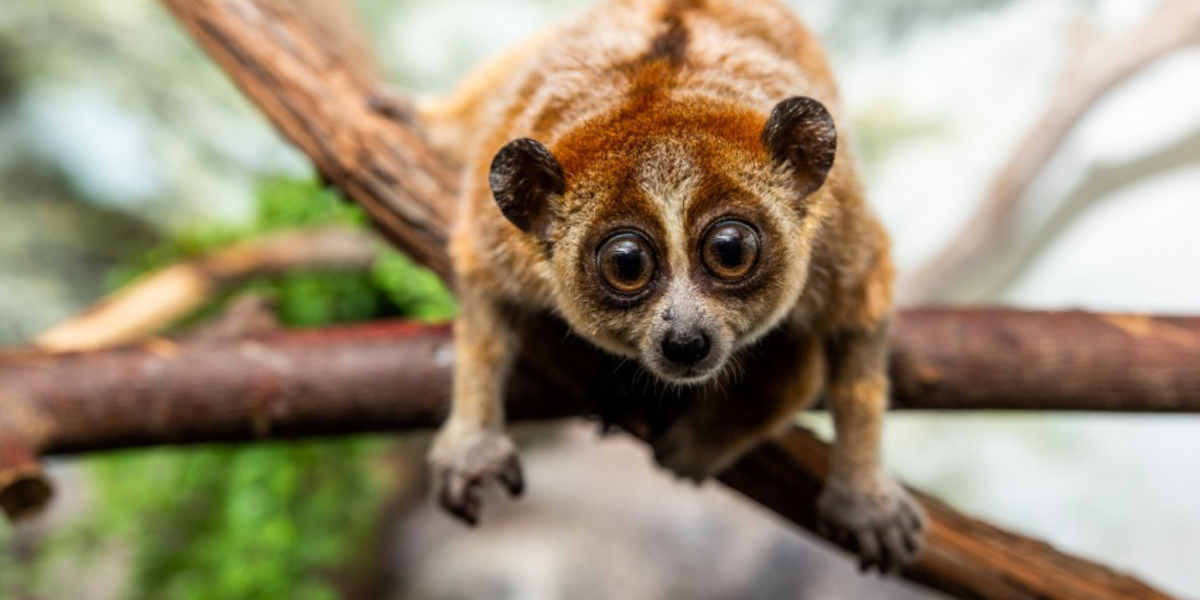
With those big, hug-me eyes, a pygmy slow loris could knock an unsuspecting human to her knees. So too, could its weird armpit venom. Slow lorises are venomous, and when one of them feels threatened, it’ll lick the venom glands on its upper arm and spread the venom onto its teeth, mixing it with saliva to create a potent concoction of spit-venom. That way, when it bites, it really bites. Lorises even use this toxin, which rots flesh, as a weapon against each other in territory disputes. Cute, right?
Pufferfish

We get it, you see those puffers with their wide-set eyes and pucker lips, and you just want to poke one to see what it’ll do. Puffers (including species within the pufferfish and porcupinefish families) have more than one defensive trick up their sleeves, though. You know they can suck water up into their bodies to make themselves round like a balloon, and you may also expect some of them to have sharp spines all over their bodies—but did you know they’re also poisonous? A puffer’s guts are infused with tetrodotoxin (TTX), a deadly neurotoxin. The moral of this story: Mind what you catch and eat.
Hippo
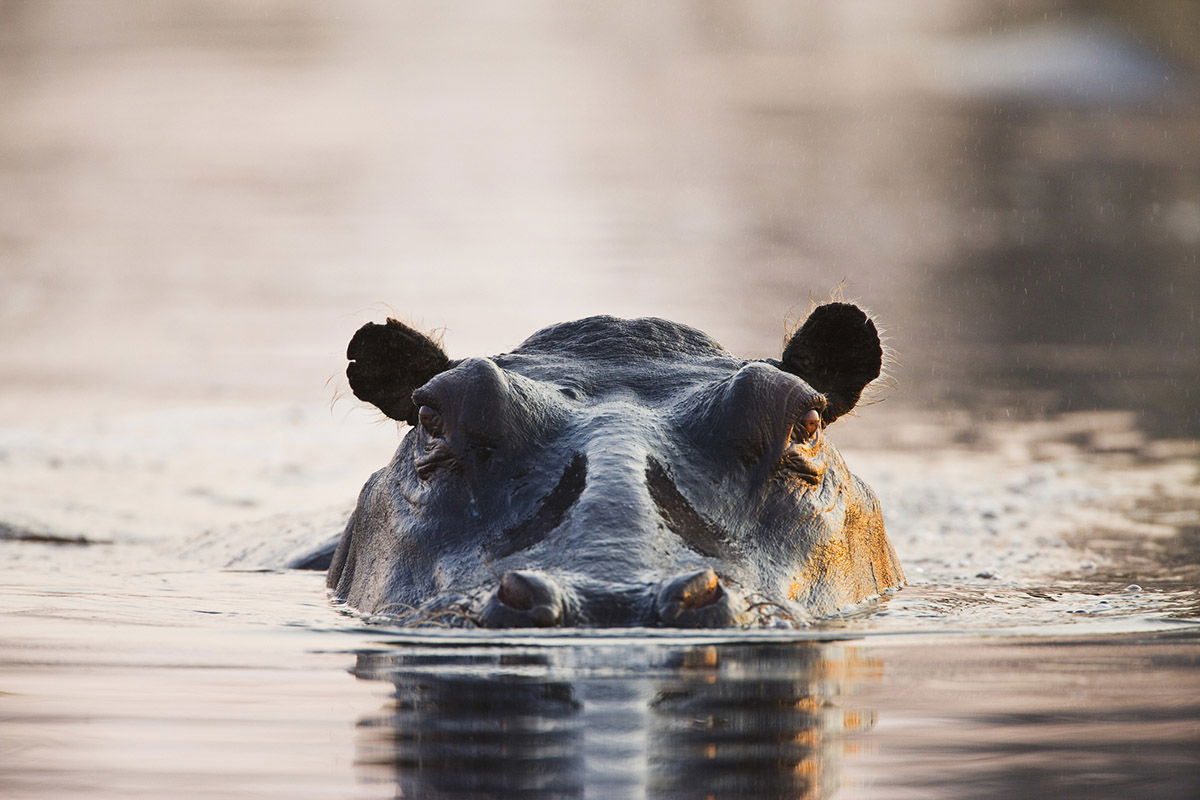
You’ve heard of gentle giants, like manatees and whale sharks, but hippos aren’t quite in that category, making those tiny little ears and pudgy faces a bit misleading. In fact, hippos are one of Africa’s most deadly animals—and that’s true even though they’re herbivores. Compared to a shark encounter (with a 25% fatality rate) and a lion encounter (with a 75% fatality rate), a hippo encounter is more likely to kill you, with an 86.7% fatality rate. Hippos are huge, strong, and territorial, so it’s best not to mess with them.
Golden Poison Dart Frog

If you’re thinking this teeny-tiny frog is on this list by accident, we’re sorry to say it’s no mistake. The golden poison dart frog is just 2 inches long, but it has enough poison to kill 10 fully grown humans, and indigenous people use this poison to lace the tips of their blow darts. You don’t have to eat a golden poison dart frog to be killed by it—just a touch will do. Next time you’re in Colombia, if you see a little yellow froggy, hightail it outta there.
Honey Badger
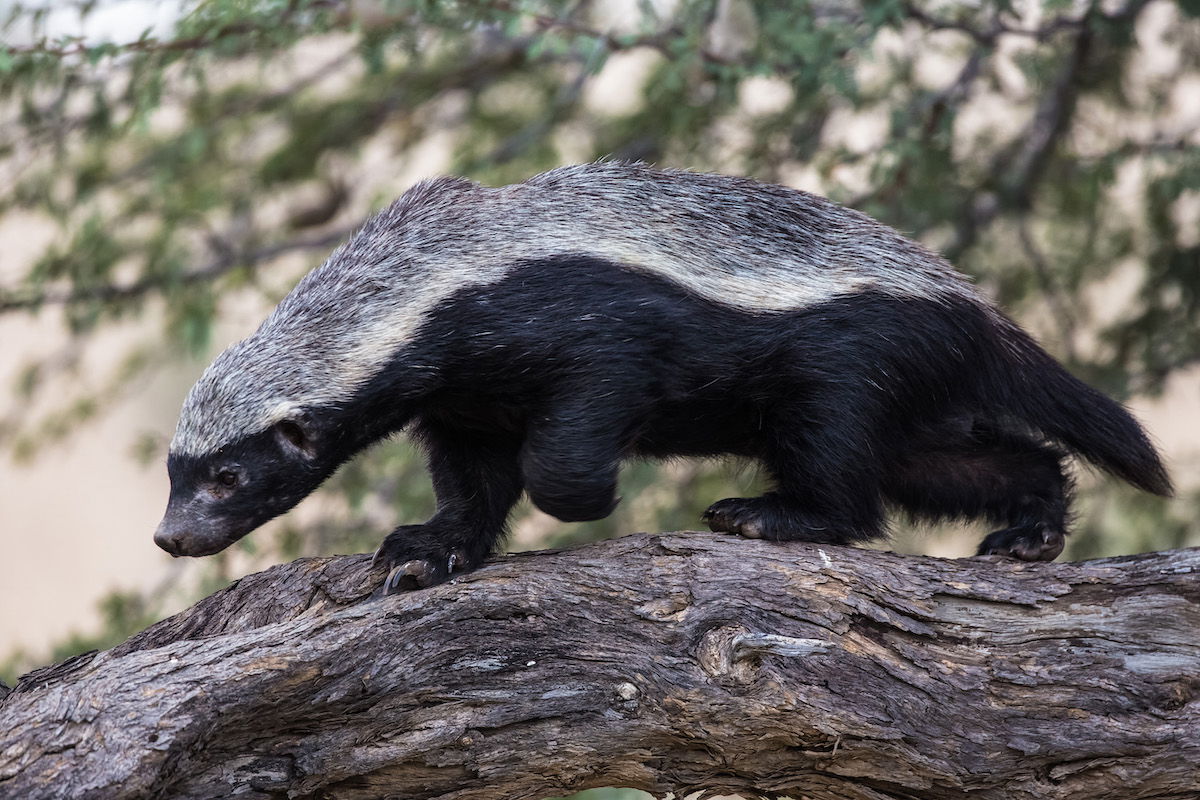
The name honey badger might not evoke fear, but these fierce little knuckleheads are a true force of nature. They eat king cobras and other highly venomous snakes for breakfast (literally), they invade bee hives to eat bee larvae (even as they’re being stung repeatedly), and they take on animals they have no business taking on (like lions). Native to Africa, honey badgers are built to fight, and fight they do. They have long claws and sharp teeth, but it’s their cocky attitude that makes them the internet’s favorite don’t-care devils.
Puss Caterpillar

Whatever you do, don’t pet the fuzzy caterpillar. The venomous puss caterpillar is tiny (about an inch long) and furry, but its little body is packed with toxic spines that’ll be hard to get out of your skin if you’re unfortunate enough to brush up against it. Puss caterpillars are southern flannel moths in their larval stage, and these insects live in Florida and some other southern U.S. states. You’ve been warned.
Blue-Ringed Octopus

An itty-bitty octopus with blue rings is not just an itty-bitty octopus. It could be one of a few different species of blue-ringed octopus. Like a pufferfish, a blue-ringed octopus has a secret weapon called TTX, one of the most powerful known neurotoxins on Earth. To put it into perspective, TTX is reportedly 1,200 times more toxic to humans than cyanide. Oh, and there is no known antidote. Blue-ringed octopuses bite and inject this venom to paralyze their prey. (Charming little things.)
Leopard Seal

Seals are so cute, with their sausage-like bodies and galumphing gait, but leopard seals are fierce predators—and they’re definitely not cuddle-worthy. Leopard seals live in Antarctica and the Southern Ocean, where they hang out on pack ice and hunt penguins and other seals. Although human deaths by leopard seals are very rare, these predators are known to pierce Antarctic researchers’ inflatable boats, because they’re ornery like that.





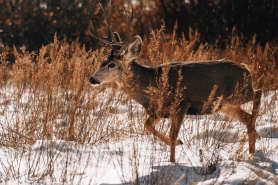



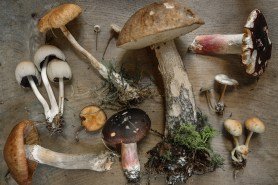
Gotta say the Pygmy Slow Loris really threw me off. I had no idea mammals could even be venomous!
Pingback: Mysterious Gollum-Like Creature Found at Washington Rest Stop - Senderismo Total